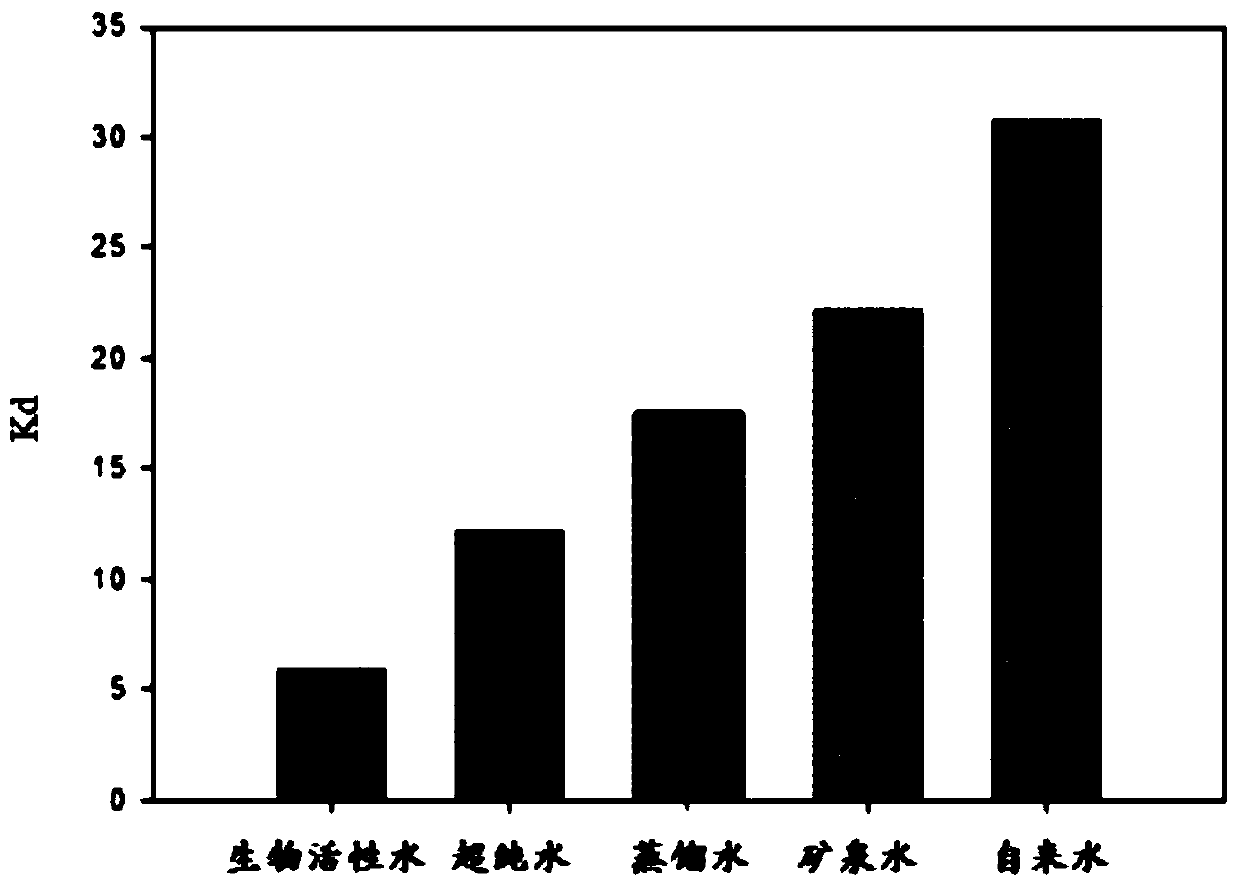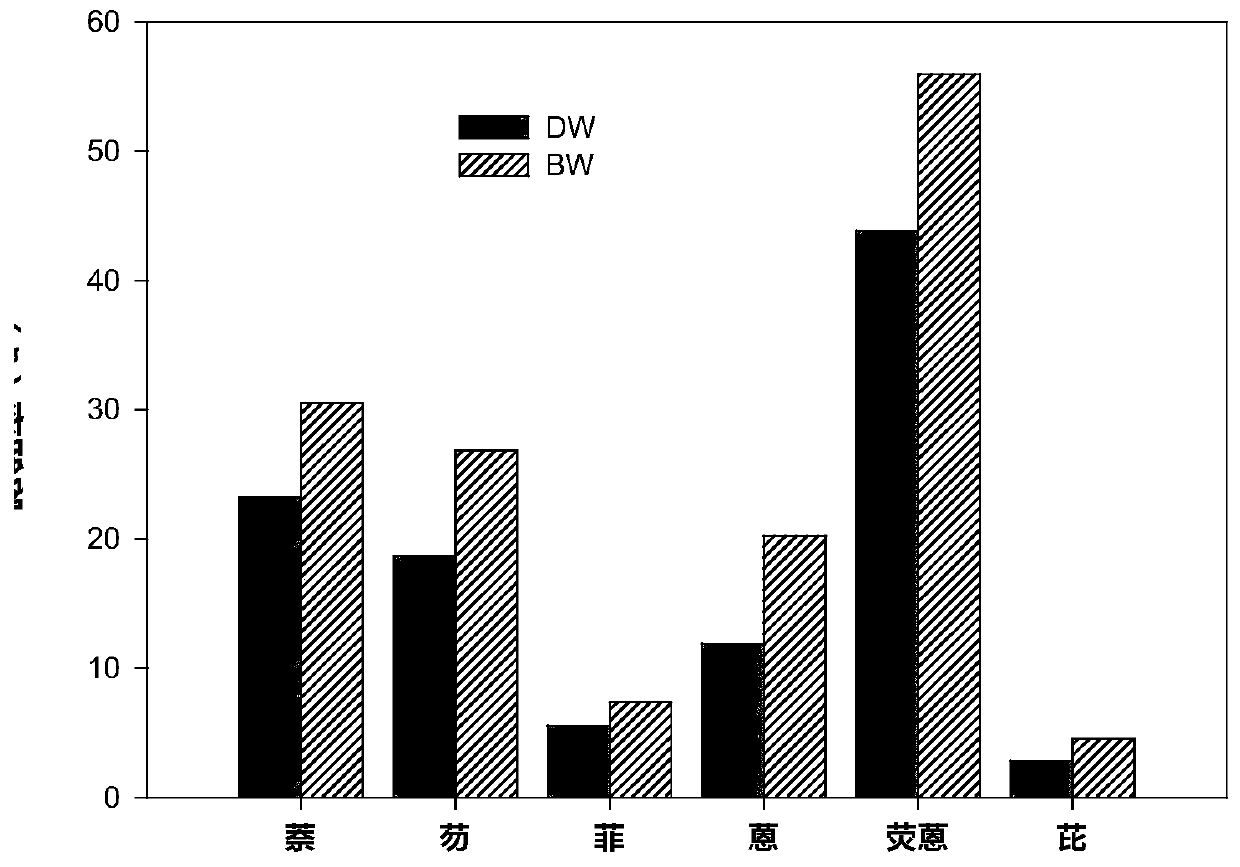Remediation method of polycyclic aromatic hydrocarbon contaminated soil
A remediation method, polycyclic aromatic hydrocarbon technology, applied in the field of remediation of polycyclic aromatic hydrocarbon-contaminated soil, can solve the problems of secondary pollution and bioremediation efficiency to be improved, achieve strong desorption capacity, enhance bioremediation efficiency, and enhance availability sexual effect
- Summary
- Abstract
- Description
- Claims
- Application Information
AI Technical Summary
Problems solved by technology
Method used
Image
Examples
preparation example Construction
[0028] In the present invention, the preparation method of the bioactive water (bioactive water; BW) preferably comprises the following steps:
[0029] mixing peat soil, bentonite, calcium alginate, cement and water, and solidifying and molding the obtained mixed slurry to obtain a molding mixture;
[0030] The molding mixture and pumice are placed in water for aeration to obtain biologically active water.
[0031] In the present invention, peat soil, bentonite, calcium alginate, cement and water are preferably mixed, and the obtained mixed slurry is solidified and molded to obtain a molding mixture. In the present invention, there is no special limitation on the types and sources of the peat soil, bentonite, calcium alginate and cement, and commercially available products well known to those skilled in the art can be used; wherein, the pH value of the peat soil is preferably 5.47.
[0032] In the present invention, the mass ratio of peat, bentonite, calcium alginate and ceme...
Embodiment 1
[0043] 1. Preparation of biologically active water
[0044] Mix 40g of peat soil (pH value 5.47), 20g of bentonite, 0.6g of calcium alginate and 15g of cement, and then spray an appropriate amount of distilled water under stirring conditions to form a mixed slurry with suitable hardness and softness, and add the mixed slurry to the mold 12g of the molding mixture and 24g of pumice were put into 1000mL of distilled water, and aerated for 4d by using an air pump at a flow rate of 0.55L / min, and then filtered to remove the molding mixture. material and pumice to obtain biologically active water (BW).
[0045] 2. NaCl solubility analysis
[0046] Take 100mL of biologically active water, filter with GF / C filter paper (Whatman 1822-047), then take 25mL of the resulting filtrate into three 100mL beakers, place the beakers on a heatable magnetic stirrer and stir, the temperature of the biologically active water Keep at 30°C, slowly add NaCl solid until the NaCl solid can no longer b...
PUM
 Login to View More
Login to View More Abstract
Description
Claims
Application Information
 Login to View More
Login to View More - R&D
- Intellectual Property
- Life Sciences
- Materials
- Tech Scout
- Unparalleled Data Quality
- Higher Quality Content
- 60% Fewer Hallucinations
Browse by: Latest US Patents, China's latest patents, Technical Efficacy Thesaurus, Application Domain, Technology Topic, Popular Technical Reports.
© 2025 PatSnap. All rights reserved.Legal|Privacy policy|Modern Slavery Act Transparency Statement|Sitemap|About US| Contact US: help@patsnap.com



